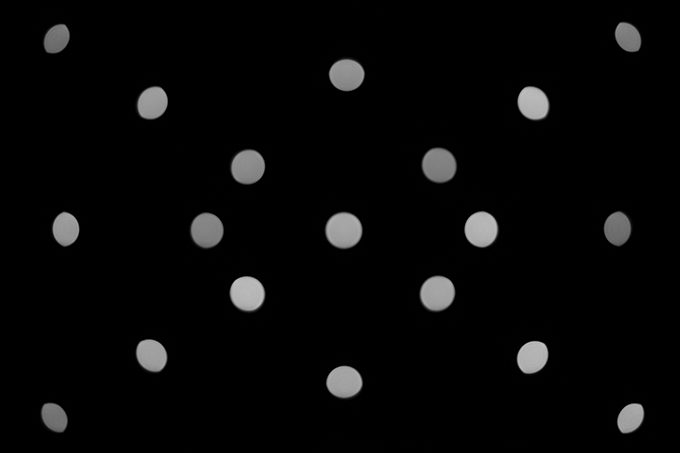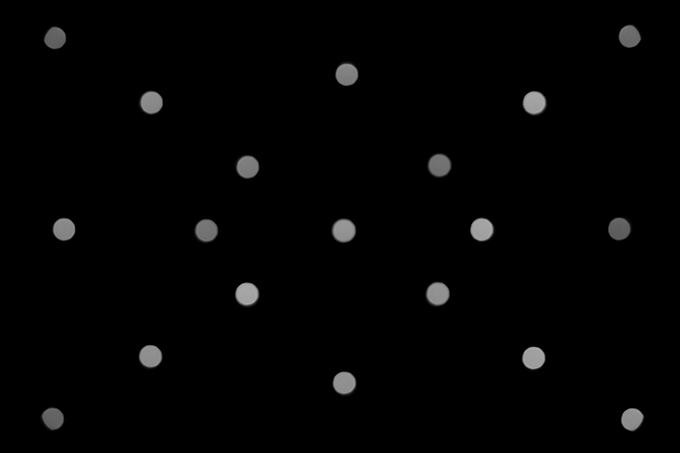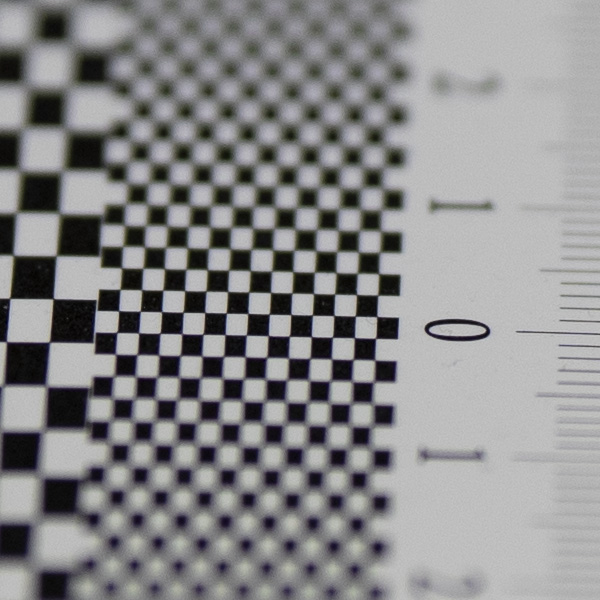Introduction
Canon wouldn’t be Canon without their extremely fast prime lenses. And why bother with an f/1.4 aperture when you can also develop an f/1.2 lens, right? Meet the Canon RF 85mm f/1.2 USM L. Just from the high-level specs, you may think that it’s a new incarnation of the EF version but it’s actually a brand new design. Besides the “usual” aspherical and UD elements, it also incorporates Canon’s BR (Blue Spectrum Refractive) element for superior chromatic correction. We’ll see the effect of all this goodness later. One of the more unfortunate side effects of choosing f/1.2 over f/1.4 is, of course, the higher price tag. At 2700USD/EUR it’s not for the faint-hearted and if that isn’t enough, you can spend an extra 300USD for the “DS” (Defocus Smoothing) version. The DS features an apodization filter for an even smoother bokeh. Unsurprisingly, the RF 85mm f/1.2 USM L is a member of the professional-grade L class in Canon’s growing R-mount lineup.
The build quality of the (big) Canon RF 85mm f/1.2 USM L is exceptional. The body is made of a combination of metal and high-quality plastic parts based on a metal mount. Some may argue that it feels a little “hollow” relative to its weight but formally there isn’t anything to complain about really. It features a weather-resistant design that protects against dust and moisture. The focus ring operates smoothly. On top of that Canon incorporated a secondary control ring at the lens’ front. It can be configured to various functions like e.g. exposure compensation or aperture control – and it even clicks. Of course, all these functions can also be controlled on the camera. A deep barrel-shaped lens hood is part of the package.

The AF performance does, of course, heavily dependent on the camera. The AF speed is good on the EOS R but it’s clearly not a sports lens – nor was it intended to be one. The heavy weight of the focus group simply takes its toll here. Canon’s USM drive is near noiseless but not as noise-free as nano-USM or STM. Manual focusing works “by wire”. The focus action is very precise. Full-time manual override is also possible. Some users may miss a distance scale on the lens but there’s one in the viewfinder/LCD. An image stabilizer is not provided but at least Canon’s latest gang of cameras features in-body IS anyway.
| Specifications | |
|---|---|
| Optical construction | 13 elements in 9 groups including 3x aspherical, 1xUD, 1xBR elements |
| Number of aperture blades | 9 (rounded) |
| min. focus distance | 0.85 m (max. magnification ratio 1:8.3) |
| Dimensions | 103.2×117.3mm |
| Weight | 1195g |
| Filter size | 82mm |
| Hood | barrel-shaped (bayonet mount, supplied) |
| Other features | weather sealing, configurable control ring, fluorine coating |
Distortion
Image auto-correction is a convenient way to hide design issues but Canon obviously thought not to bother with this. The original distortion characteristic of the Canon RF 85mm f/1.2 USM L is just … perfect.

Vignetting
A similar degree of perfection can’t really be achieved when it comes to vignetting – physics has its limits here. The front diameter of the RF 85mm f/1.2 USM L is pretty huge but this can’t prevent a light falloff of 2.2EV (f-stops) at f/1.2. However, in the grand scheme of things, this is still relatively moderate for such a lens. The issue is greatly reduced at f/2 and mostly gone from f/4 in real-life terms.
If you choose to activate image auto-correction either in-camera or your favorite RAW converter, the vignetting is just noticeable at f/1.2 in very critical scenes. Please note that auto-correction will increase image noise in the image corners due to signal amplification.

MTF (resolution) at 30 megapixels
Coming back to perfection – the resolution. It’s breathtaking really and that’s not just at medium aperture settings but also at f/1.2. The center quality is already excellent and the outer image field is easily on a very good level. Stopping down increases the quality slightly from great to stellar. Pure lens porn …
The centering quality of the tested sample was very good. The field curvature is negligible.
Please note that the MTF results are not directly comparable across the different systems!
Below is a simplified summary of the formal findings. The chart shows line widths per picture height (LW/PH) which can be taken as a measure of sharpness. If you want to know more about the MTF50 figures, you may check out the corresponding Imatest Explanations

Chromatic Aberrations (CAs)
Lateral CAs have an average width of around 0.3px at the image borders. This is negligible. So it seems as if Canon’s new BR element did its job here.

Bokeh
The following discussion of the bokeh of this lens is probably like questioning the existence of a god for some owners …
If bokeh just means a shallow depth-of-field combined with a maximum of foreground/background blur in your book – read no further because then this is about the most perfect lens in this respect that you can get.
If you think that there’s a little bit more to the topic, you may wish to read further. Let’s start with a sample of the worst-case scenario:

Is that a good bokeh? Of course, the worst-case scenario is just that – the worst case.
Anyway, let’s not get ahead of ourselves here and continue with the rendering of out-of-focus highlights. They are, generally, nice with just a faint onion-like sub-structure and no outlining. The highlight discs are perfectly circular between f/1.2 and f/2 and there’s only a hint of a more edgy aperture shape at f/2.8.

When broadening our view to the whole image frame, the situation is, of course, a little different. The shape of the highlights deteriorates towards the corners. Despite the huge lens barrel, this happens fairly early but this does, of course, also related to the extreme aperture. The “good” center area broadens quite a bit at f/1.6 although the corner highlights look less pleasant than at f/1.2 here. The corner highlights are almost restored at f/2 and basically circular at f/2.8. But then who wants to shoot at f/2.8 with this lens? Please note that the irregular shape in the corners is absolutely normal – it’s a mechanical vignetting effect.




As far as the general blur is concerned, there are two stories. The sample crop to the right below shows the bokeh in the foreground. It is smooth and buttery. The background blur – shown to the left – is more complex. You may notice that the “crown” is actually fairly harshly rendered. Overall this is far from being bad but hard contrasts can be a bit of an issue as shown in the sample image at the beginning of this section.

Bokeh Fringing
In a perfect world scenario, you won’t see any axial CAs thus color fringing on the Z-axis. However, only a handful of fast lenses are correcting the issue effectively. The Canon RF 85mm f/1.2 USM L is very good in suppressing this but it’s not fully corrected.
At f/1.2 you should be able to spot the usual purplish color fringing in front of the focus point and a greenish halo beyond. However, the fringing is greatly reduced at f/1.6 and pretty much gone at f/2. As such it is better than the vast majority of fast 85mm lenses.
The focus point does only insignificantly shift to the rear when stopping down.




Sample Images
Competition
Canon RF is a closed system as far as we know, so third-party lens support is ALMOST non-existent at the time of this review. That is with the exception of one player – the Samyang AF 85mm f/1.4 FE. It surely can’t touch the Canon lens. However, it also comes at a fraction of the costs (700USD vs 2700USD). Just for comparison, you can see the “old school” to the right – an EOS DSLR with the EF 85mm f/1.2 USM L II. So while the camera body did get significantly smaller, the RF 85mm f/1.2 USM L is super-sized compared to its distant EF cousin …

Visual comparison courtesy of camerasize.com.
As far as sheer optical capabilities are concerned, the Canon RF 85mm f/1.2 USM L is nothing short of outstanding. It is one of the best - if not the best - lenses that we tested to date. The resolution is outlandish, especially considering its extreme max aperture. Most lenses out there would consider themselves to be fortunate if they could deliver a peak performance similar to what the RF 85mm f/1.2 delivers at f/1.2 already. Lateral CAs are negligible and image distortions are basically non-existent. There is some vignetting in RAW images but that's just normal for such a lens and can be corrected in-camera or in post-processing. In terms of bokeh, there are two schools of thinking. If it's about the capability of producing as much object separation and background/foreground blur as possible, it doesn't get any better. When looking a bit more into the details, there are a few imperfections though. The lens doesn't love hard contrasts in the (rear) focus transition zone. To be fair here - you probably won't notice this is most scenes. Out-of-focus highlights are nicely rendered. However, if you ask yours truly whether to buy this lens or the RF 85mm f/1.2 USM L DS, he'd go for the latter one. Nothing beats a creamy bokeh more but a creamier one - but that's also a matter of taste, of course. Bokeh fringing is very well controlled albeit not totally absent at f/1.2.
The build quality of the lens is excellent but we expected no less in this price class. Canon used quality materials and it is, of course, dust- and moisture-resistant. The focus ring is very smooth and the added control-ring is a plus if you want to control e.g. the aperture on the lens as well. That all being said - this is also a brick of a lens. It's not overly long but "fat". And it's heavy - 1.2kg heavy - which can limit the fun factor a bit if you have to carry it all day besides all your other gear. The AF is pretty fast for such a lens although it's not "instant. Some may also miss an image stabilizer - after all Canon was able to fit one into the EF 85mm f/1.4 USM L IS. However, the centering quality tends to be better on non-IS lenses and you can now get in-camera IS anyway.
Highly recommended ... of course!
-
Optical Quality (30mp)
-
Build Quality
-
Price / Performance


